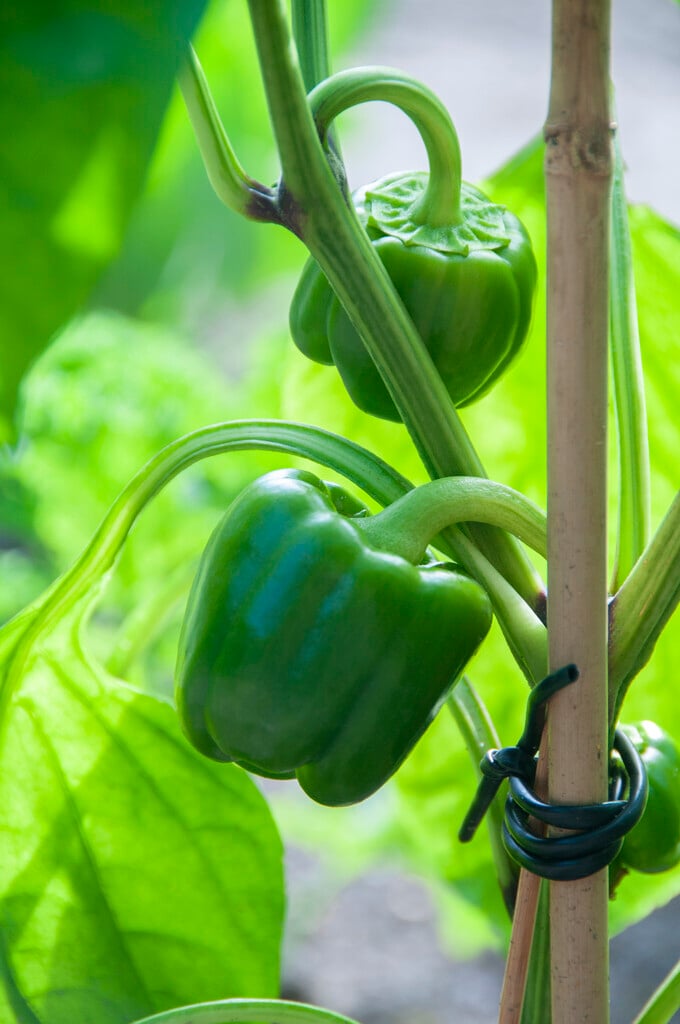Capsicum annuum
sweet pepper
This is the wild plant from which many of our cultivated sweet peppers and chillies have been bred. It shows a wide range of fruit shapes, colours, sizes and degree of capsaicin production - from where the heat may or may not be felt. It has green leaves and usually white flowers, though occasionally tinged purple. It is actually a woody perennial but is almost always grown as an annual in the UK as it is hard to keep alive over the cooler months
Other common names
bird pepperbonnet pepper
see morecayenne pepper
cherry pepper
chilli
common capsicum
cone pepper
garden ginger
goat pepper
guinea pepper
long pepper
ornamental pepper
paprika
pimento
red cluster pepper
red pepper
spur pepper
sweet pepper
Size
Ultimate height
0.5–1 metresTime to ultimate height
1 yearUltimate spread
0.1–0.5 metresGrowing conditions
Moisture
Moist but well–drainedpH
Neutral, AcidColour & scent
| Stem | Flower | Foliage | Fruit | |
| Spring | Green | |||
|---|---|---|---|---|
| Summer | White Purple | Green | Green Yellow Orange | |
| Autumn | Green | |||
| Winter |
Position
- Full sun
Aspect
South–facing or West–facing
Exposure
Sheltered Hardiness
H1CBotanical details
- Family
- Solanaceae
- Native to GB / Ireland
- No
- Foliage
- Deciduous
- Habit
- Columnar upright, Spreading branched
- Potentially harmful
- Humans/Pets: Irritant if eaten, skin/eye irritant. Wear gloves and other protective equipment when handling For further information and contact numbers regarding pets, see the HTA guide to potentially harmful plants
- Genus
Capsicum are annual or perennial plants, with simple, alternate leaves, and tubular or bell-shaped flowers. They are grown for their glossy, many-seeded edible fruits, including chilli and bell peppers, and as indoor ornamental plants
- Name status
Unresolved
- Plant range
- S USA to Brazil, Caribbean
How to grow
Cultivation
Grow in pots of fertile peat-free compost under glass or on a sheltered sunny patio. Alternatively grow in good garden soil in a polytunnel. See pepper cultivation
Propagation
Propagate by seed. See sowing vegetable seeds or sowing seeds indoors for further advice
Suggested planting locations and garden types
- Patio and container plants
- Conservatory and greenhouse
Pruning
Pinch out the growing tip of shoots to encourage a bushier plant. Keep picking fruit to encourage further flowering
Pests
May be susceptible to glasshouse red spider mite, glasshouse whitefly and aphids
Diseases
May be susceptible to grey moulds
Love gardening
Sign up to receive regular gardening tips, inspiration, offers and more
View our Privacy Policy
Get involved
The Royal Horticultural Society is the UK’s leading gardening charity. We aim to enrich everyone’s life through plants, and make the UK a greener and more beautiful place.

